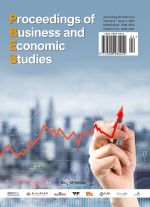Abstract
Under the impetus of the “Dual Credit” policy, traditional fuel vehicle manufacturers are confronted with significant pressure to meet new energy vehicle credit requirements. To address this challenge, these manufacturers are increasingly adopting the Original Design Manufacturer (ODM) strategy to collaborate with new energy vehicle enterprises, thereby acquiring credits and expanding their market presence. However, this strategic approach not only intensifies competition between new energy and traditional fuel vehicle markets but also reshapes the profit distribution between the two types of firms. Drawing upon the framework of the Dual Credit policy, this study establishes a Cournot game model to examine the strategic interactions between traditional fuel vehicle manufacturers and new energy vehicle producers. It further investigates the optimal production decisions under the ODM strategy and evaluates their implications for market dynamics and corporate profitability. The findings reveal that, although the ODM strategy heightens market competition, it leads to substantial profit improvements for both types of manufacturers compared to the alternative of directly purchasing credits, while also fostering the growth of the new energy vehicle sector. Moreover, the Case study demonstrates micro-level impact of the dual credit policy on enterprises’ response strategies, offering valuable insights for policymakers and industry decision-makers.
References
Li C, 2023, Optimizing the Growing Dual Credit Requirements for Automobile Manufacturers in China’s Dual Credit Policy. Sustainability, 15(22): 15884. https://doi.org/10.3390/su152215884
Yin Y, Zhan Z, 2021, Research on “Dual-Credits” Policy of Automobile Enterprises. Springer, Singapore: 977–988. https://doi.org/10.1007/978-981-15-7945-5_72
Lou X, 2024, Financial Analysis of China’s New Energy Vehicle Industry under the Harvard Analytical Framework: A Case Study of BYD Company Limited and NIO Inc. Highlights in Business, Economics and Management, 40: 214–221. https://doi.org/10.54097/k8va6688
Yu H, Liu Y, Li J, Fang M, 2020, Investigation on Development of Passenger Car’s CAFC–NEV Dual Credits in China. IEEE Conference Paper, China. https://doi.org/10.1109/ICPEE51316.2020.9311016
Shen H, Liu Y, 2023, Research on the Forecast of NEV Credit Price Based on the Law of Value. EAI Conference Paper, China. https://doi.org/10.4108/eai.26-5-2023.2334467
Xiao L, Chen ZS, Hou R, et al., 2023, Greenness-Based Subsidy and Dual Credit Policy to Promote New Energy Vehicles Considering Consumers’ Low-Carbon Awareness. Computers & Industrial Engineering, 183: 109620. https://doi.org/10.1016/j.cie.2023.109620
Cheng Y, 2024, Optimal Production Strategies with Credit Sharing for Automakers under the Dual-Credit Policy. Mathematics, 12(15): 2429. https://doi.org/10.3390/math12152429
He H, Li S, Wang S, Chen Z, Zhang J, Zhao J, Ma F, 2021, Electrification Decisions of Traditional Automakers under the Dual-Credit Policy Regime. Transportation Research Part D: Transport and Environment, 98: 102956. https://doi.org/10.1016/J.TRD.2021.102956
He Q, Zhao H, 2023, Influence of Dual-Credit Policy on the Energy Conservation and Emission Reduction Technology R&D of Chinese Auto Industry. Results in Engineering, 19: 101487. https://doi.org/10.1016/j.rineng.2023.101487
Wang Y, Zhao F, Yuan Y, Hao H, Liu Z, 2018, Analysis of Typical Automakers’ Strategies for Meeting the Dual-Credit Regulations Regarding CAFC and NEVs. Automotive Innovation, 1(1): 15–23. https://doi.org/10.1007/S42154-018-0010-3
